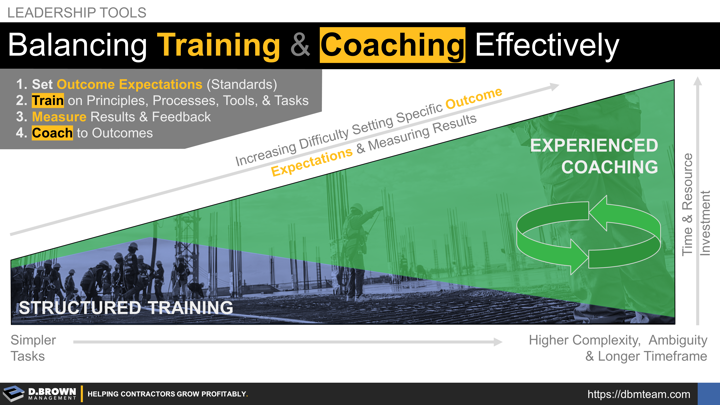An example of a simpler task is cutting material to a specific length. An example of a more complex objective is to expand the business into a new market or geography. Managing a project or a functional area of the business falls somewhere in between these two examples.
All tasks require some element of feedback and coaching. For example, there will be safety, production, and quality standards for cutting the material. The supervisor’s role is to provide that feedback in a way that is actionable.
As tasks increase in complexity, they require more training. For example, framing the floor of a building requires mastery of multiple tasks, and therefore, much more training.
There is a point where the ratio of training to coaching starts changing dramatically. It is critical for leaders and those involved in workforce development to understand:
- Breaking down the business into tasks and objectives at the right Level of Detail (LOD).
- Effectively grouping of tasks and objectives at approximately the same level into a role.
- Being able to set clear outcome expectations and standards for each at the right LOD.
- The optimum ratio and sequencing of training to coaching for each task or objective.
- Ensuring the right quantity and quality of trainers and coaches are developed.

